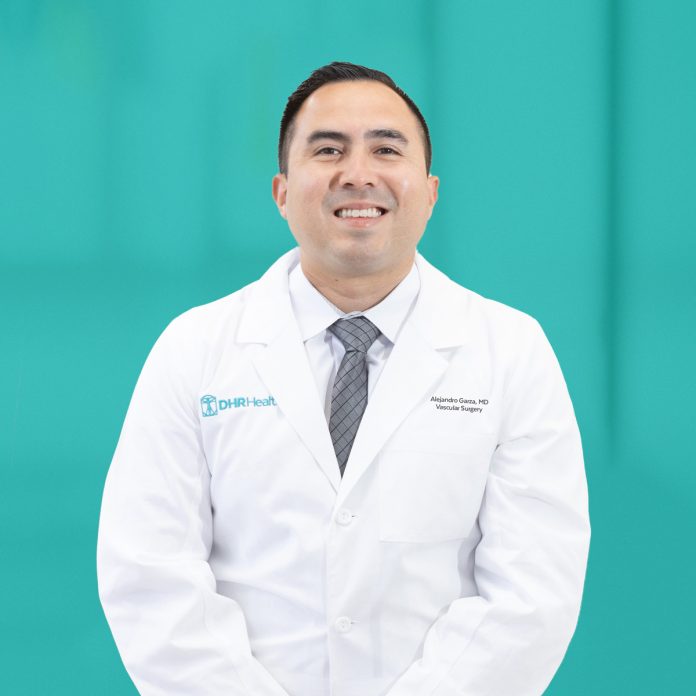Written By: Alejandro Garza, M.D.
DHR Health Surgery Institute
Your carotid arteries are two main arteries that carry blood from your heart, up your neck, and to your brain. Healthy carotid arteries are smooth and unobstructed, allowing blood to flow freely and provide oxygen and nutrients to your brain. Typically, with age, these vessels build up plaque, which is made mostly of fat and cholesterol. Plaque narrows the inside of the arteries and makes them stiff. This process is known as atherosclerosis.
Carotid artery disease results when the carotid arteries become narrow or obstructed and provide a risk of the plaque breaking off (embolism) from the vessel and traveling into the brain, causing a stroke. Stroke is the third leading cause of death and the leading cause of permanent disability in the U.S. Almost 25% of strokes occur due to carotid atherosclerotic embolic disease.
Risk factors for carotid artery disease include advanced age, smoking, high blood pressure, diabetes, obesity, high cholesterol, and family history. Carotid artery disease can be asymptomatic, especially in early stages. Sometimes a patient presents with a TIA (mini stroke), with symptoms lasting from a few minutes to fewer than 24 hours. Symptoms include weakness, numbness, or tingling on one side of the body, loss of vision or blurred vision in one or both eyes, inability to speak clearly, and difficulty talking or understanding what others are saying. A mini stroke should be treated as a medical emergency, as this is a strong predictor of a future stroke.
If your doctor suspects carotid artery disease, it can be confirmed by undergoing a noninvasive duplex ultrasound examination, which could indicate how severe the disease is. If this is the case, your physician may ask you to see a vascular specialist because they are highly trained in every type of vascular procedure.
Depending on the severity of your condition, treatment options may include lifestyle changes like smoking cessation, antiplatelet and anti-cholesterol medication, procedures such as open carotid endarterectomy (cleaning out the plaque with surgery), an endovascular stent (minimally invasive access with wire and catheters through the groin or arm), or a combination of both procedures, known as TCAR (Transcarotid Artery Revascularization). During a TCAR, we make a small incision at the base of the neck,
followed by new technology to prevent embolization, called “reversal of flow,” and, finally, placement of a carotid stent to prevent the plaque from growing or migrating to the brain.
If you feel you have–or ever had–any of the symptoms described above, please talk to your primary care physician about being referred to a vascular surgeon or other vascular specialist. For more information, contact the DHR Health Surgery Institute at (956) 362-8170.




